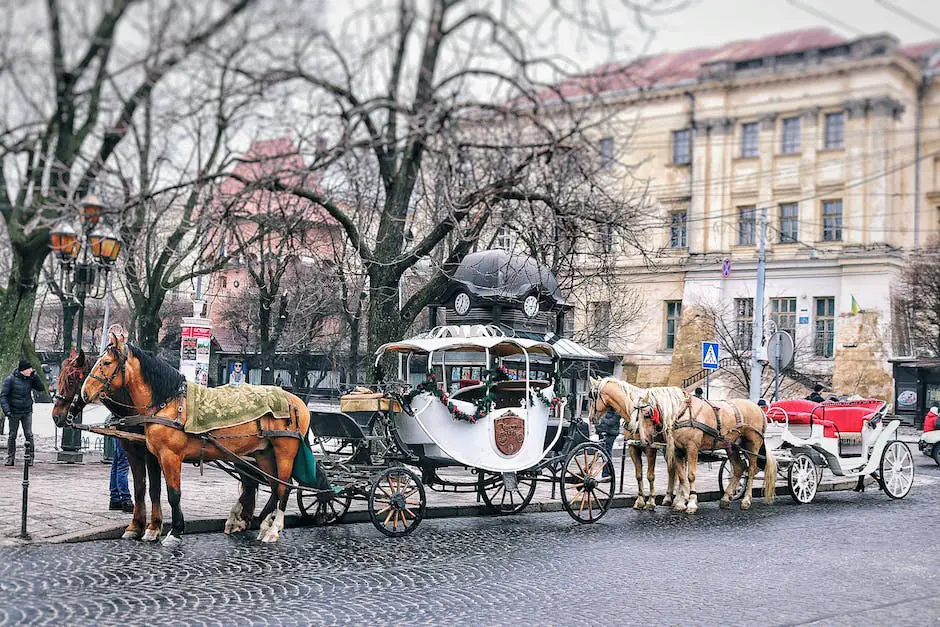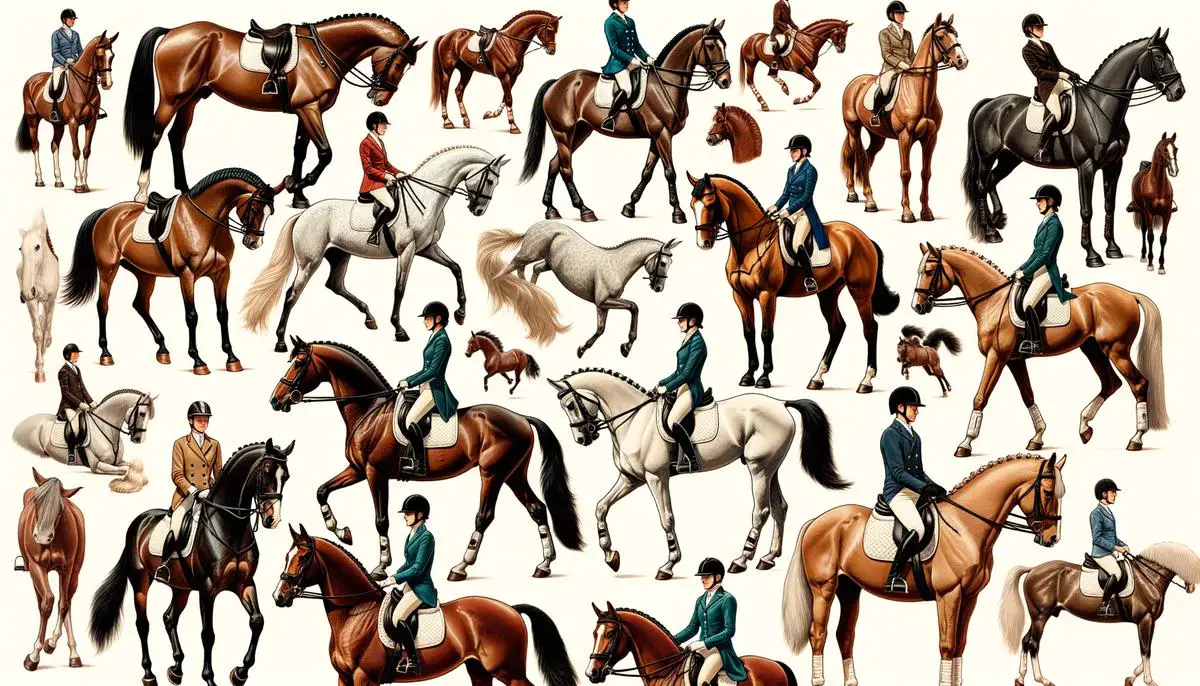The allure of French riding horses encompasses a storied heritage, an embodiment of grace and athleticism that captivates equestrians and spectators alike. This essay delves into the heart of French equine culture, unpacking the distinctive traits, rich history, and diverse applications of breeds like the Selle Français, the robust Camargue, and the spirited French Trotter. Dive into the subtle nuances that make each breed an archetype of its kind, adept at conquering specific equestrian disciplines, as we explore the tapestry of qualities that should guide enthusiasts in selecting a horse aligned with their riding aspirations.
Table of Contents (Horspedia)
Breeds of French Riding Horses
Galloping Through France: The Cream of the Crop in French Horse Breeds
Horse enthusiasts, saddle up! France isn’t just famous for the Eiffel Tower and delectable pastries; it boasts some of the most magnificent horse breeds that are a dream for any rider. Whether you’re a seasoned equestrian or someone who can barely tell a trot from a canter, here’s the lowdown on standout breeds in French equestrianism that have earned a tip of the riding helmet on a global scale.
First off, meet the Selle Français, a gem in the equestrian crown. This breed’s like the all-star athlete of the horse world: powerful, elegant, and versatile. Born from a mix of French regional breeds and thoroughbred flair, the Selle Français excels in show jumping and dressage. They’re your go-to equine pals for competition and a testament to French equestrian excellence.
Next up, witness the stately Elegance of the French Trotter. These guys are long-distance running champs, with stamina that would give the Energizer Bunny a run for its money. Bred for harness racing, they’re a fusion of native French mares and speedy American Standardbreds. If you’re into the thrill of the race, a French Trotter might just be your speed.
Now, can’t talk French horse breeds without tipping the hat to the Camargue. These rugged beauties are like the cowboys of French horses — living wild in the marshes and wetlands of the Camargue region. Small but mighty and born with a rebellious streak, their agility and heart make them perfect for herding bulls and galloping along beaches.
Let’s not forget the Percheron, the gentle giants of the bunch. Known for their incredible strength and cool temperaments, these draft horses can trace their celebrity roots back to the Huisne valley of Perche province. Though they were originally war horses, these days they’re more about peaceful carriage rides and logging work in forestry. Big, friendly, and always ready for heavy lifting, Percherons are the trusty workhorses with hearts of gold.
Lastly, the spotlight shines on the elegant and historic breed known as the Criollo (not originating from France but with a significant presence). A mix of old Iberian and Arabian blood, these horses are the navy SEALs of the horse world: intelligent, resilient, and unbeatable in endurance. Whether for endurance races or leisure riding, Criollos are reliable companions with the stamina to go the distance.
So, there you have it, folks — a glimpse at the standout breeds that make French equestrianism what it is: a blend of grace, power, and heart. Whether jumping, racing, working, or just enjoying a peaceful ride, these breeds are true equine ambassadors of French culture and skill. Dressage, jumping, or a countryside trot, the perfect French horse is waiting to make every equestrian dream come true. Grab those reins!

Photo by katiemoum on Unsplash
Training and Disciplines
Training French Horses for Varied Equestrian Disciplines
In the world of equestrian sports, the training of French horses for different disciplines is a meticulous process that reflects the complexity and beauty of the sport. Whether preparing for show jumping, dressage, eventing, or endurance, the approach taken to develop a horse’s skills must be tailored to the individual animal and the demands of the discipline.
For show jumping, trainers start by getting horses comfortable with handling basic flatwork, which includes working at different gaits and developing responsiveness to the rider’s aids. Gradually, small jumps are introduced, and as the horse builds confidence, the difficulty and height of the obstacles increase. Balance, agility, and power are essential qualities that show-jumping horses must possess, and Selle Français are often a top pick due to their athleticism and keen jumping ability.
Dressage requires a completely different regimen. The focus here is on precision, smooth movements, and the horse’s ability to perform a series of predetermined movements, known as “tests”. Training for dressage involves teaching the horse to move with grace and respond to subtle cues while maintaining a rhythmic and balanced gait. It’s all about harmony between rider and horse—Percherons can excel in this discipline, especially in the higher weight classes due to their strength and calm temperament.
Eventing encompasses dressage, cross-country, and show jumping. Horses used in eventing must be versatile, brave, and have immense stamina. Their training regimen is extensive because they must pivot between the finesse required of dressage and the boldness necessary for cross-country, all the while keeping enough in reserve for show jumping. Cross-country training is particularly challenging, as horses must navigate varied and sometimes treacherous terrain at a fast pace, while also leaping over fixed obstacles. Developing trust between horse and rider is paramount here—traits that breeds like the Selle Français and Criollo excel at with their intelligence and adaptable nature.
Finally, endurance riding is a test of a horse’s stamina over long distances, often traversing rugged and changing landscapes. Horses trained for endurance must learn to regulate their pace, maintain a steady trot, and recover quickly at checkpoints. Endurance training involves building up the distance traveled gradually while monitoring the horse’s condition closely. The Criollo, with their innate endurance, shines in this discipline, able to sustain a long, steady pace over considerable distances.
Moreover, regardless of the discipline, mental training is just as critical as physical preparation. A horse needs to be mentally adaptable, curious, and willing to learn. Trainers spend countless hours not only working on a horse’s performance skills but also on developing a bond that facilitates non-verbal communication and deep trust.
The careful and systematic training approaches used for French riding horses have placed France at the forefront of the equestrian world. And as horses progress through their training, their natural abilities are honed, enabling them to perform breathtakingly within their respective arena. Whether it’s the swift precision of show jumping or the enduring pace of an endurance race, French horses stand out, thanks to their tailored training and intrinsic qualities, ready to meet the rigorous demands of each unique equestrian discipline.

Care and Maintenance

Through the passage of seasons and the rhythm of hooves, the harmony between rider and horse is a testament to the dedication and expertise with which French riding horses are nurtured. This tale of equine magnificence does not end on the last page but continues in the stables and arenas where these majestic creatures exhibit their splendor. As we part the curtain on their world, we gain not only a profound appreciation for their legacy and prowess but also an invaluable insight into the essential role that thoughtful care and relentless commitment play in sculpting these horses into the champions of every rider’s dreams.

